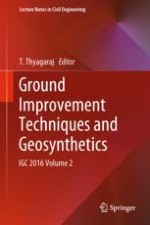2019 | OriginalPaper | Chapter
Ground Improvement Using Sand Columns to Mitigate Liquefaction—A Case Study
Authors : Minu Ann George, J. Jasmine Nisha, Ghan Sandeep Mangal
Published in: Ground Improvement Techniques and Geosynthetics
Publisher: Springer Singapore
Activate our intelligent search to find suitable subject content or patents.
Select sections of text to find matching patents with Artificial Intelligence. powered by
Select sections of text to find additional relevant content using AI-assisted search. powered by
